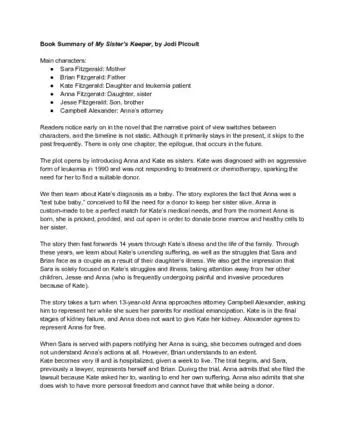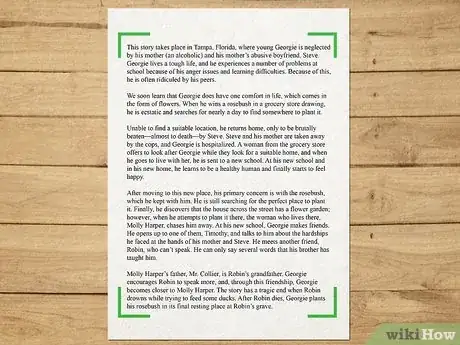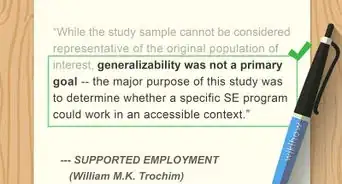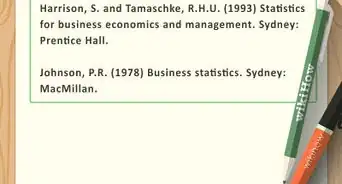This article was co-authored by Richard Perkins. Richard Perkins is a Writing Coach, Academic English Coordinator, and the Founder of PLC Learning Center. With over 24 years of education experience, he gives teachers tools to teach writing to students and works with elementary to university level students to become proficient, confident writers. Richard is a fellow at the National Writing Project. As a teacher leader and consultant at California State University Long Beach's Global Education Project, Mr. Perkins creates and presents teacher workshops that integrate the U.N.'s 17 Sustainable Development Goals in the K-12 curriculum. He holds a BA in Communications and TV from The University of Southern California and an MEd from California State University Dominguez Hills.
There are 8 references cited in this article, which can be found at the bottom of the page.
wikiHow marks an article as reader-approved once it receives enough positive feedback. This article received 26 testimonials and 80% of readers who voted found it helpful, earning it our reader-approved status.
This article has been viewed 1,786,107 times.
Writing a summary is a great way to process the information you read, whether it’s an article or a book. If you’re assigned a summary in school, the best way to approach it is by reviewing the piece you’re summarizing. Read it thoroughly and take notes on the major points you want to include in your summary. When you get to writing your summary, rely on your memory first to make sure the summary is in your own words. Then, revise it to ensure that your writing is clear and the grammar, punctuation, and spelling are all perfect.
Steps
Sample Summaries
Reviewing the Piece
-
1Read the piece thoroughly. You should read it without making any kind of marks. Instead, focus on really understanding what the author is trying to say. This might mean that you need to read one sentence or paragraph more than once. You might also want to reread the whole piece. That's fine.[1]
-
2Write down what you think the main point of the piece is. This will help you start to put the piece's arguments in your own words. You can also ask yourself what point or points or themes come up throughout the entire piece. The title can also give you a tip as to the main point of the piece.[2]
- Gather key quotes from the text to help you pinpoint main ideas.[3]
- The author might also state their thesis more plainly by saying something like "my argument is...." or I believe...
- In a fiction piece, the author will more likely emphasize themes. So if you notice that love - discussions or descriptions of it, for example - come up a lot, one of the main points of the piece is probably love.
Advertisement -
3Reread the piece, taking notes on the major points of it. Once you know for sure what the author's main point is, reread the piece, looking for the ways they support that point. You can find supporting material by looking for details that refer to the title, surprises in the argument or plot, repetition, or a lot of attention to details such as descriptions of characters (if any). Write down each time something like this occurs.[4]
- Focus on the first two sentences and the last two sentences of each chapter. That's often where the author will put important points![5]
- To put something in your own words, write it down as if you were explaining or describing it to a friend. In that case, you wouldn't just read what the author wrote. Do the same when you're writing down the major points in your own words.
-
4Don't focus on the evidence that the author uses to support those points. You only need to know what they're arguing. So, for example, say the author's main argument is: "The U.S. Civil Rights Movement actually began in the 1950s." They might say that black women's boycott of mass transit is an example of this. You only need to note the black women's boycott, not the examples of that boycott that the author uses.[6]
- For fiction pieces, this means avoiding rewriting every single thing that happens in the piece. Focus instead on the major plot points and the main motivator for those points. Don't include everything that happens to the character along the way.
Writing The Summary in Your Own Words
-
1Start with the source’s information. You should start every summary with the author and the article’s title. This lets your reader know that you’re summarizing what someone else has written.[7]
- For example, you can start with something like “George Shaw’s '‘Pygmalion’' is a play that addresses issues of class and culture in early twentieth-century England.”
-
2Work from memory to write the main point of each section. Without looking at your notes, write a first draft that includes the main point of each section in your own words. A summary shouldn’t just repeat what the original author said, so using your own words is very important.[8]
- If you absolutely must use the original author’s words, put them in quotation marks. This tells your reader those words aren’t yours. Not doing this is academic plagiarism, and it can get you in a lot of trouble.
- Make sure you format the quote correctly!
-
3Present the material using the author’s point of view. As you write, make sure you’re only summarizing the original piece of writing. You shouldn’t be inserting your own opinions of the piece or of the events the piece covers. Instead, summarize what the original author said and retain their tone and point of view.[9] [10]
- For example, you might think that Hamlet spends a lot of time thinking and not a lot of time acting. You can say something like, "Hamlet is a man of thought, rather than action," instead of saying, "Why doesn't Hamlet do something once in a while?"
- Pay attention to moments when the author's tone clearly highlights that something is important.[11]
-
4Use language appropriate to a summary. You want your reader to know that you’re summarizing another person’s arguments. So you should occasionally use phrases like “the author argues,” or “the article claims” when you’re presenting those arguments. This reminds the reader that it’s not your piece, but someone else’s.[12]
- In fiction pieces, you can say something like "Shakespeare's Hamlet then spends a lot of time brooding on the castle ramparts." This tells your reader you're talking about Shakespeare's play, not inventing your own story.
Revising Your Draft into a Coherent Summary
-
1Reread the draft you wrote from memory against your notes. Take your notes out and compare them to your from-memory draft. If there’s anything major you forgot to include, put it in your second draft.[13]
-
2Present the summary in chronological order. Rather than jumping around to different parts of the story or article, you should explain what happened in the sequence that it happened. This is especially important for summarizing works of fiction.
-
3Eliminate repetition. Sometimes in an article or book, the author might make the same point multiple times as a way to underline their main points. In your summary, you don’t need to do this. When you’re rereading your summary, delete any repetitive points – even if the author makes them multiple times, you only need to make them once.[14]
- If you notice an author has made the same point multiple times, though, it’s a good indicator that this is an important point, and it should definitely be in your summary.
-
4Add transitions where necessary. If you’re focused on getting all of the main points down, you might not be paying attention to how the paragraphs of your summary fit together. When you revise, make sure that you connect each paragraph to the next, and back to the main point.[15]
- For example, in a summary of an article about the cause of the American Revolution, you might have a paragraph that summarizes the author's arguments about taxes, and another about religious freedom. You can say something like, "Although some colonists believed that taxes should entitle them to representation in Parliament, the author also argues that other colonists supported the Revolution because they believed they were entitled to representation in heaven on their own terms."
-
5Check for grammatical and spelling errors. Once you've finished revising the arguments in your draft, check the little things. Make sure there are no spelling or grammar mistakes. Look for any additional or missing punctuation and correct that as well.
- Don't use spell-checker for spelling errors. It will catch if you spell something wrong, but not if you use the wrong spelling of a word. For example, it won't catch that you used "there" when you meant "their."
-
6Check your length. Once you’ve added anything you might have forgotten to your summary, check how long it is. If you’re summarizing something for a school assignment, be sure to stick to the parameters or guidelines provided by your instructor.
- Generally, a summary should be around one quarter the length of the original piece. So if the original piece is 4 pages long, your summary should be no more than 1 page.[16]
-
7Ask someone else to read your work. Another person may see an argument or point in a completely different light than you have, giving you a new feel for the work and yours.
- Not only should they be comparing your work for accuracy, ask them to read it for flow and summation. They should be able understand what happened in the article or story by reading your summary alone.[17] Don't hesitate to ask for criticism; then weigh those criticisms and make valid changes.
Expert Q&A
-
QuestionCan I use persuasive speech in a summary?
 Alexander Peterman, MAAlexander Peterman is a Private Tutor in Florida. He received his MA in Education from the University of Florida in 2017.
Alexander Peterman, MAAlexander Peterman is a Private Tutor in Florida. He received his MA in Education from the University of Florida in 2017.
Test Prep Tutor Because a summary should be an shortened, objective version of a written work, I would avoid your own persuasive speech in a summary. Remember that this was someone else's work, not your own! Save persuasive writing for an analysis, not a summary.
Because a summary should be an shortened, objective version of a written work, I would avoid your own persuasive speech in a summary. Remember that this was someone else's work, not your own! Save persuasive writing for an analysis, not a summary. -
QuestionHow would I write a summary of a short story?
 Alexander Peterman, MAAlexander Peterman is a Private Tutor in Florida. He received his MA in Education from the University of Florida in 2017.
Alexander Peterman, MAAlexander Peterman is a Private Tutor in Florida. He received his MA in Education from the University of Florida in 2017.
Test Prep Tutor I would focus on the main themes and try to retell what the story is about the story in a shortened version. Focus on retelling it from the author's perspective, not your own -- and stay in chronological order.
I would focus on the main themes and try to retell what the story is about the story in a shortened version. Focus on retelling it from the author's perspective, not your own -- and stay in chronological order. -
QuestionHow do you start a summary?
 Richard PerkinsRichard Perkins is a Writing Coach, Academic English Coordinator, and the Founder of PLC Learning Center. With over 24 years of education experience, he gives teachers tools to teach writing to students and works with elementary to university level students to become proficient, confident writers. Richard is a fellow at the National Writing Project. As a teacher leader and consultant at California State University Long Beach's Global Education Project, Mr. Perkins creates and presents teacher workshops that integrate the U.N.'s 17 Sustainable Development Goals in the K-12 curriculum. He holds a BA in Communications and TV from The University of Southern California and an MEd from California State University Dominguez Hills.
Richard PerkinsRichard Perkins is a Writing Coach, Academic English Coordinator, and the Founder of PLC Learning Center. With over 24 years of education experience, he gives teachers tools to teach writing to students and works with elementary to university level students to become proficient, confident writers. Richard is a fellow at the National Writing Project. As a teacher leader and consultant at California State University Long Beach's Global Education Project, Mr. Perkins creates and presents teacher workshops that integrate the U.N.'s 17 Sustainable Development Goals in the K-12 curriculum. He holds a BA in Communications and TV from The University of Southern California and an MEd from California State University Dominguez Hills.
Writing Coach & Academic English Coordinator As with everything, start with a plan. Set aside some time to look for the text main ideas. It doesn't matter if it's an article or a textbook page, check the very first sentence of each paragraph, as that's where the main ideas usually are. Then, try paraphrasing some of that, rewriting the main ideas in your own words. That's a real skill you should practice from elementary school to the university level.
As with everything, start with a plan. Set aside some time to look for the text main ideas. It doesn't matter if it's an article or a textbook page, check the very first sentence of each paragraph, as that's where the main ideas usually are. Then, try paraphrasing some of that, rewriting the main ideas in your own words. That's a real skill you should practice from elementary school to the university level.
References
- ↑ https://leo.stcloudstate.edu/acadwrite/summary.html
- ↑ http://teacher.scholastic.com/reading/bestpractices/comprehension/authorsmainidea.pdf
- ↑ Richard Perkins. Writing Coach & Academic English Coordinator. Expert Interview. 1 September 2021.
- ↑ https://leo.stcloudstate.edu/acadwrite/summary.html
- ↑ Richard Perkins. Writing Coach & Academic English Coordinator. Expert Interview. 1 September 2021.
- ↑ https://leo.stcloudstate.edu/acadwrite/summary.html
- ↑ http://utminers.utep.edu/omwilliamson/engl0310/summaryhints.htm
- ↑ https://public.wsu.edu/~mejia/Summary.htm
- ↑ Richard Perkins. Writing Coach & Academic English Coordinator. Expert Interview. 1 September 2021.
- ↑ https://public.wsu.edu/~mejia/Summary.htm
- ↑ Richard Perkins. Writing Coach & Academic English Coordinator. Expert Interview. 1 September 2021.
- ↑ https://public.wsu.edu/~mejia/Summary.htm
- ↑ https://public.wsu.edu/~mejia/Summary.htm
- ↑ http://www.hunter.cuny.edu/rwc/handouts/the-writing-process-1/invention/Guidelines-for-Writing-a-Summary
- ↑ http://www.hunter.cuny.edu/rwc/handouts/the-writing-process-1/invention/Guidelines-for-Writing-a-Summary
- ↑ https://public.wsu.edu/~mejia/Summary.htm
- ↑ http://leo.stcloudstate.edu/acadwrite/summary.html
About This Article
Before you write a summary, read the piece you’re summarizing, then make notes on what you think the main point and major supporting arguments are. When you’re ready to draft your summary, start with the author and title, then use your own words to write what you think the author’s main point is in each section. Be sure to focus on what the author thinks and feels rather than what you do! Finally, reread your summary and check it for good spelling, punctuation, and grammar. For more suggestions from our reviewer about polishing your summary and improving transitions, read on!




















-Writing-Step-16.webp)






















-Writing-Step-16.webp)




































